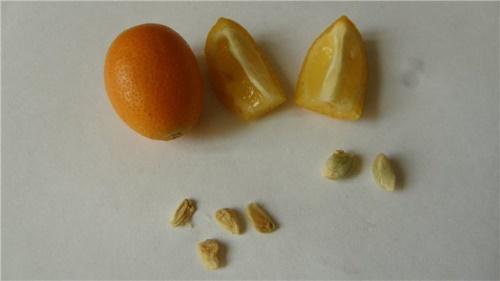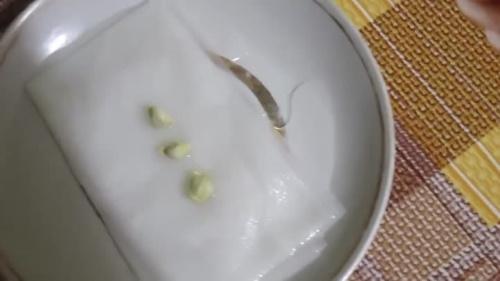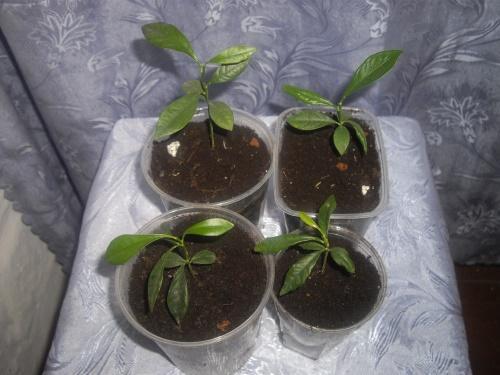How to grow a kumquat from a bone - planting and care features
 The strange word "kumquat" hides an interesting citrus: it looks like a small orange, but only with a tangerine flavor. There is another characteristic nuance - the pulp of the orange fruit is sour, but the peel itself is sweet. This allows kumquat to be consumed along with the skin, because it is even tastier this way. This "orange tangerine" grows in the form of a small tree, which branches abundantly and lends itself well to forming. This makes the culture an excellent example for a home citrus collection. However, the pot culture is the only way to get yourself a tropical plant, because in our area in the garden it does not overwinter. The most affordable way to get a kumquat is to plant seeds. It is easier to get them by buying fresh fruits in the market, but seedlings are not easy to find. There is nothing super complicated in how to grow a kumquat from a stone. The only nuance lies in the tightness of the similarity, but there is a secret for this. However, let's take a look at the whole procedure step by step.
The strange word "kumquat" hides an interesting citrus: it looks like a small orange, but only with a tangerine flavor. There is another characteristic nuance - the pulp of the orange fruit is sour, but the peel itself is sweet. This allows kumquat to be consumed along with the skin, because it is even tastier this way. This "orange tangerine" grows in the form of a small tree, which branches abundantly and lends itself well to forming. This makes the culture an excellent example for a home citrus collection. However, the pot culture is the only way to get yourself a tropical plant, because in our area in the garden it does not overwinter. The most affordable way to get a kumquat is to plant seeds. It is easier to get them by buying fresh fruits in the market, but seedlings are not easy to find. There is nothing super complicated in how to grow a kumquat from a stone. The only nuance lies in the tightness of the similarity, but there is a secret for this. However, let's take a look at the whole procedure step by step.
Selection and preparation of seeds for planting

- rinse in several waters.
- put in a cloth bag or gauze.
- stand for several days, making sure that the fabric does not dry out.
A growth promoter can be added to the soaking water.
How to grow a kumquat from a bone: planting and caring for a plant
 When the seeds are swollen, you can start planting. In advance, you can purchase a substrate for citrus fruits or mix the soil with sand, calcining it before planting. It is better to plant seeds in small pots of 2-3 pieces, with a margin, since not all can sprout. It is imperative to cover the top with a film, not forgetting that the kumquat is a tropical plant. The pots should be placed on a warm and light windowsill, periodically moistened and ventilated. Seeds sprout long enough, at least 1 month. After the sprouts appear, the film can be removed.
When the seeds are swollen, you can start planting. In advance, you can purchase a substrate for citrus fruits or mix the soil with sand, calcining it before planting. It is better to plant seeds in small pots of 2-3 pieces, with a margin, since not all can sprout. It is imperative to cover the top with a film, not forgetting that the kumquat is a tropical plant. The pots should be placed on a warm and light windowsill, periodically moistened and ventilated. Seeds sprout long enough, at least 1 month. After the sprouts appear, the film can be removed.
When two pairs of leaves are formed on the seedlings, it is time to dive them into a separate dish. When transplanting, you can trim the central root to stimulate the growth of the root system. The more developed it is, the larger and more magnificent the kumquat will grow.
 Caring for indoor kumquats is generally the same as for other potted citrus crops:
Caring for indoor kumquats is generally the same as for other potted citrus crops:
- Regular watering.
- Frequent spraying is necessary - the plant does not tolerate dry air and sheds leaves.
- Seasonal feeding. From spring to early autumn, you need to make mineral complexes twice a month. The rest of the time, two dressings in 3 months are enough.
- Crown formation. Kumquat branches well, but somewhat chaotic. Spring pruning of thickening branches and pinching of young shoots will give it a compact and well-groomed appearance.
 The first fruiting in a seed-grown kumquat does not occur earlier than 10 years after planting. This evergreen plant does not have a dormant period. In the middle of summer, the bush begins to bloom in two waves, with a break of almost a month. In autumn, fruits are tied in place of the inflorescences. They ripen throughout the winter, from December to February.
The first fruiting in a seed-grown kumquat does not occur earlier than 10 years after planting. This evergreen plant does not have a dormant period. In the middle of summer, the bush begins to bloom in two waves, with a break of almost a month. In autumn, fruits are tied in place of the inflorescences. They ripen throughout the winter, from December to February.
Nothing of the kind ... I got a Kumquat out of the bone in two days !!!!! and it grows very quickly ...